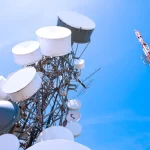The SSD (solid state disk) was first introduced in the market in the late 1990s as an alternative to the traditional hard drives. A solid-state drive, also known as a solid state disk, is a non-volatile storage device that uses non-volatile circuit boards to store data permanently, usually using flash memory chips, and acting as second storage in the computer’s hierarchy of storage. It can also be called a solid state device. Most solid state drives use their own interface for communication with the computer. However, other drives use interfaces that connect to common PC devices such as your keyboard, mouse, scanner, printer, video card, USB and others.
SSDs have several benefits over hard disks in terms of storage and performance. For instance, SSDs offer much higher capacity than hard disks, enabling them to accommodate more applications and content. They are much faster than hard disks in read and write speeds, making them ideal for high-performance computing. SSDs also have considerably better power consumption, which contributes to lower electric bills, long-term battery life and better environmental awareness.
There are two different kinds of solid-state drives currently available in the market. Non-volatile flash memory (NVDIMMs) use an application-specific architecture and are more durable and can be erased and moved around easily. On the other hand, the most popular and widely used kind of solid state drive (SSD) is the solid state mechanical drive (SSD). SSDs use a non-volatile flash memory, but unlike in NVDIMMs, they do not get physically damaged when they get wet. They have been found to be much higher in reliability than NVDIMMs and for their increased endurance, SSDs are now the most popular choice for enterprise servers, desktop PCs and laptops.
A typical SSD has several components including the storage controller, random access memory (RAM), hard disk, cache, permanent memory, interface controller, and speed controllers. The SSD is built on the logic layers that are arranged in a vertical manner on a PCB (printed circuit board) of a SSD. The PC runs only when one of the SSDs is functioning. As compared to hard disk drives, SSDs have a shorter life span, because the temperature of a hot computer can affect the operation of a SSD.
Compared to hard disk drives, SSDs have some advantages. Because of their physical structure, SSDs can be positioned closer to the central processing unit or CPU and thus have lower voltage requirement. Because of this advantage, SSDs consume less power when running. Moreover, they have faster data access speeds and can function without any moving parts. Their storage capacity is also higher than the hard drive and so they can accommodate more data.
SSDs have their own disadvantages as well. For instance, SSDs consume more power than hard disks so they will use up more power when working. Another disadvantage of SSDs is the price. SSDs use up more storage capacity than their hard disk counterparts and they are still very expensive.


 Social Media Algorithms – Decoding How They Shape Your Feed
Social Media Algorithms – Decoding How They Shape Your Feed  Review of the Top 10 Smartphones of 2024
Review of the Top 10 Smartphones of 2024  Social Media Trends – How Platforms Are Adapting to Changing User Behaviors
Social Media Trends – How Platforms Are Adapting to Changing User Behaviors  The Development of PC Hardware – From CPUs to GPUs
The Development of PC Hardware – From CPUs to GPUs  Can You Use WhatsApp on a Computer?
Can You Use WhatsApp on a Computer?  Data Privacy Regulations
Data Privacy Regulations  The Race for 5G – A Global Perspective
The Race for 5G – A Global Perspective  The Growing Importance of Cybersecurity in a Digital World
The Growing Importance of Cybersecurity in a Digital World  Cheap Internet Options
Cheap Internet Options 